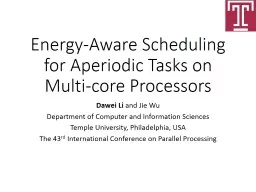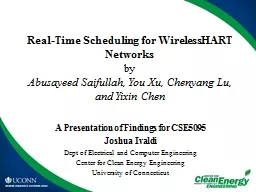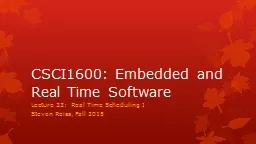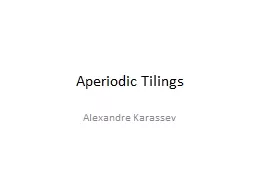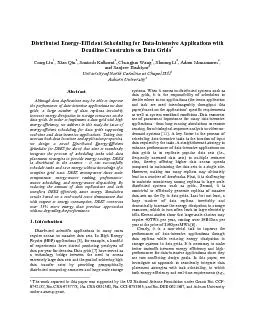PPT-Energy-Aware Scheduling for Aperiodic Tasks on
Author : lindy-dunigan | Published Date : 2016-09-09
Multicore Processors Dawei Li and Jie Wu Department of Computer and Information Sciences Temple University Philadelphia USA The 43 rd International C onference
Presentation Embed Code
Download Presentation
Download Presentation The PPT/PDF document "Energy-Aware Scheduling for Aperiodic Ta..." is the property of its rightful owner. Permission is granted to download and print the materials on this website for personal, non-commercial use only, and to display it on your personal computer provided you do not modify the materials and that you retain all copyright notices contained in the materials. By downloading content from our website, you accept the terms of this agreement.
Energy-Aware Scheduling for Aperiodic Tasks on: Transcript
Download Rules Of Document
"Energy-Aware Scheduling for Aperiodic Tasks on"The content belongs to its owner. You may download and print it for personal use, without modification, and keep all copyright notices. By downloading, you agree to these terms.
Related Documents

